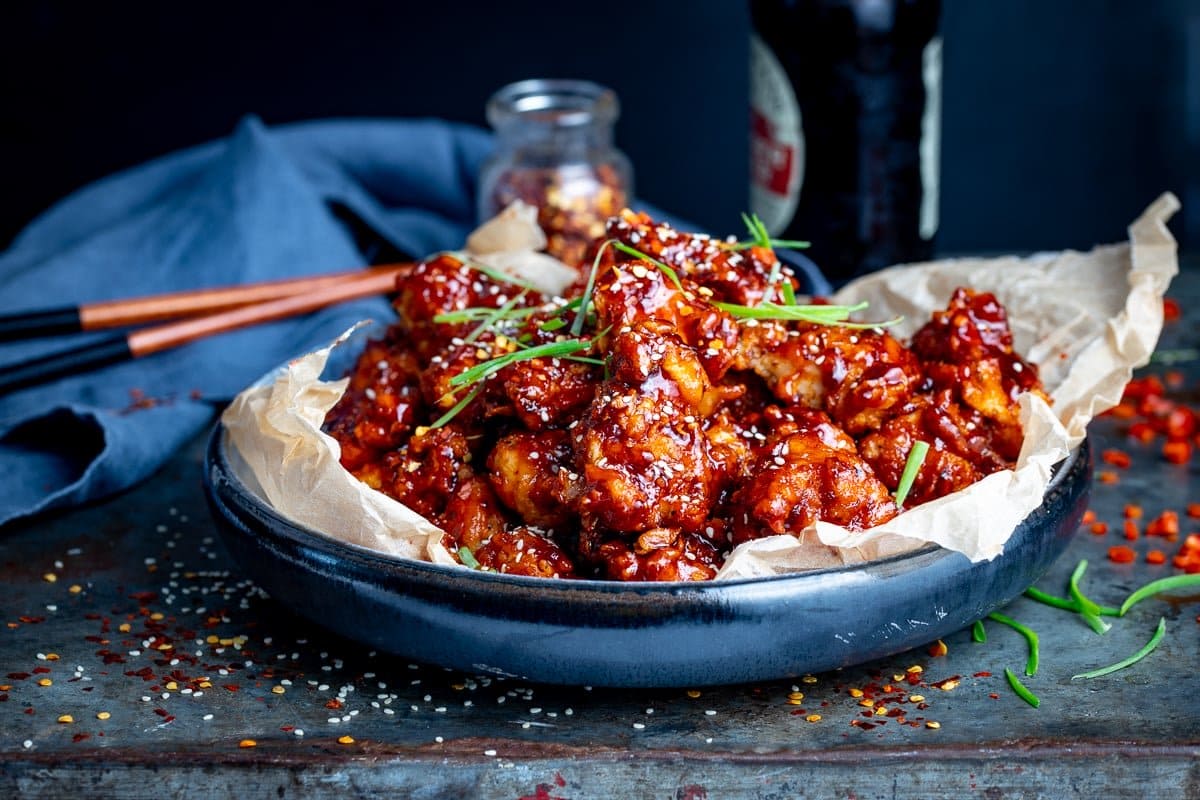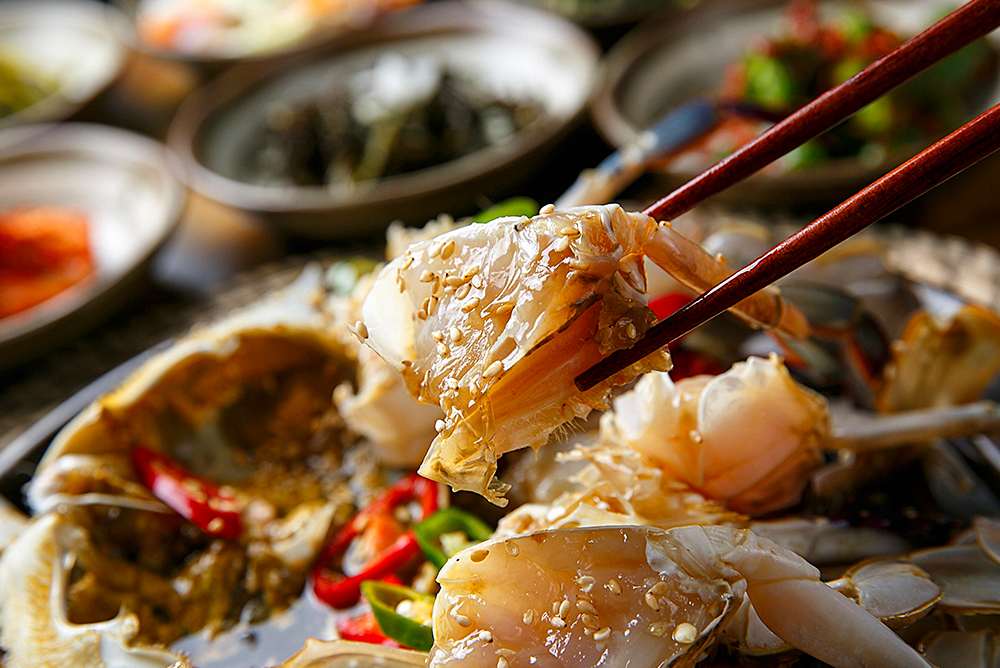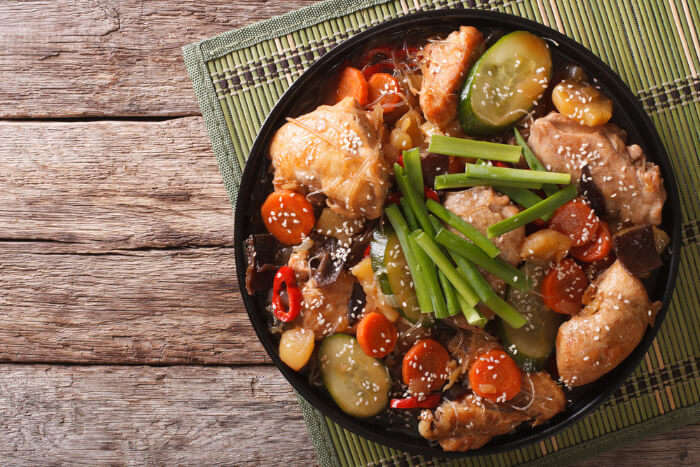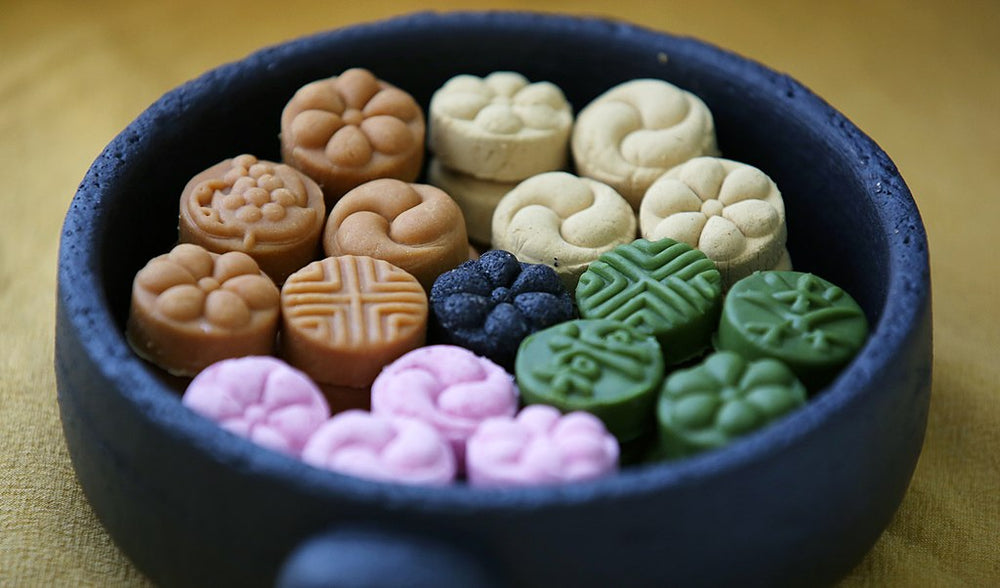When non-Koreans think of traditional Korean dishes, they often envision kimchi and barbecued meats like beef and pork. But Korea has many other delicious foods that deserve your next vacation menu.
Naengmyeon is a cold buckwheat noodle dish created to beat the winter heat. Today, it’s a summer favorite.
Grilled Meat
:max_bytes(150000):strip_icc()/__opt__aboutcom__coeus__resources__content_migration__serious_eats__seriouseats.com__2019__07__20190619-korean-bbq-vicky-wasik-35-1500x1125-4559808701e84b349986b64a18e433fb.jpg)
If you’ve ever eaten at a Korean restaurant, you’ve probably experienced the tabletop barbecue known as GUI. A blazing butane burner, sizzling beef (or pork), an assortment of side dishes, and soup or stew round out the meal.
The most well-known variety of grilled meat is bulgogi, thinly sliced marinated beef usually cooked with garlic, ginger, sesame oil, sugar, soy sauce, and pepper. It’s a staple at Korean restaurants and can be made at home.
Other examples of grilled meats include dak-galbi (marinated chicken), samgyeopsal (pork belly), gopchang-gui (small intestines) and makchang-gui (beef abomasum). Most dishes are served unmarinated, except bulgogi and jumelles, which are marinated to impart flavor before being grilled.
When hosting a grilling party, you must have all your ingredients prepped. This includes making kimchi, ssamjang, doenjang, gochujang, and other sauces and making any necessary side dishes, like banchan. This allows for maximum cooking time on the day of your event.
It’s also a good idea to have many different types of lettuce, like butter, green leaf, red, or iceberg. You’ll also need perilla leaves, which are flat, wide greens found at most Korean markets. They’re in the mint family but have a light and refreshing flavor. These can be used to fashion little meat wraps along with a smear of the dipping sauce and a bit of shaved green onion or pepper. Serve with a bowl of rice for the ultimate Korean experience.
Fried Chicken

A typical Korean meal includes a variety of meat dishes, with bulgogi and galbi being the most common. Koreans also love fried chicken, and the word can be found everywhere, from upscale restaurants to roadside stalls. It’s usually lightly seasoned and served with a spicy chili paste called gochujang.
Another popular meat dish is sannakji, a live whole octopus sliced and seasoned with salt, pepper, and soy sauce. It’s often eaten for good luck during the Lunar New Year, Chuseok, or other important celebrations. The same goes for tteokguk, a rice cake soup that consists of broth and slices of white rice cakes (garaetteok). Eating a bowl symbolizes gaining one more year.
Pajeon is a type of Korean pancake that can be made with a wide range of ingredients. The batter is typically made with eggs, wheat flour, and rice flour, but other things like scallions, seafood, or kimchi can be added for more flavor. Pajeon can be served with dipping sauces, but it’s most commonly enjoyed with fish oil and soy sauce.
Other steamed or boiled dishes include jjim, made with meat-based or seafood-based ingredients marinated in gochujang. The latter consists of vegetables stuffed with various fillings.
Jokbal are pig’s feet, and they can be enjoyed grilled or steamed. They’re dipped in gochujang, and they’re served with lettuce or perilla leaves. Another steamed or boiled snack is a sundae, cooked cow’s or pig’s blood sausages stuffed with ingredients like naengmyeon, barley, and pork blood. They’re a common snack during the cold season, and they’re eaten with the same gochujang-based sauce that’s used for tteokbokki.
Seafood

Korean cuisine is largely fish and seafood-based, with many dishes featuring a variety of ingredients that are grilled or stir-fried. It is characterized by its use of fermented condiments like gochujang (fermented red chili paste), doenjang (fermented bean paste), Jim (garlic), and spices like ginger and sesame oil. It is also famous for using fresh vegetables, particularly napa cabbage and bok choy.
Bulgogi, a traditional beef dish grilled with sweet and spicy sauces, is among the most popular Korean foods. It is usually eaten with rice and is often served at celebrations or banquets. It has also become a major ingredient in cross-over foods, such as bulgogi hamburgers and pizzas.
Another common seafood dish is jjukumi, a spicy marinated octopus dish. It is a popular celebratory food for birthdays, weddings, and holidays.
Naengmyeon is a noodle soup made with long, thin, handmade noodles made of buckwheat or other ingredients, such as potatoes, sweet potatoes, arrowroot starch, and kudzu. It is traditionally eaten without cutting the noodles to symbolize longevity and good health. It is commonly consumed during boknal days, the hot summer months, as an energizing food to keep people cool.
Bibimbap is one of the most well-known Korean dishes, and it has become an internationally recognized country symbol. It consists of a bowl of rice with various toppings and is meant to be mixed and eaten with hands. It is a versatile and easy-to-make dish, with each region contributing unique variations. Some bibimbap recipes include chicken, beef, or seafood, while others are vegetarian-based. The ingredients are roasted or boiled to create a deep flavor and are typically dressed with gochujang, doenjang, or both.
Vegetables

Although the meat-heavy bulgogi is probably the dish most non-Koreans associate with Korean food, the cuisine contains many vegetarian options. These include bibimbap and japchae, made with noodles, vegetables, and other ingredients like seafood or beef. Japchae, in particular, is often enjoyed as a celebratory meal for those not attached to someone on Black Day, an unofficial holiday observed by single people on April 14.
There are also many kinds of soups based on vegetables or seaweed. One of the most popular is namul, blanched vegetables seasoned with salt and spices like garlic, chili powder, and scallions. The name is typically served as an appetizer or a light dinner before more substantial dishes are ordered.
Koreans also use pickles and other preserved foods, such as wild greens, roots, leaves, flowers, jellyfish, and seaweed. These dishes can be eaten raw or cooked as side dishes or main courses.
Vegetables are also commonly used as a base for Korean stews and soups, including the famous kimchi, fermented cabbage, and other vegetables. Other soups containing vegetables include kalguksu, which is a type of egg noodle that is simmered in a broth with vegetables such as radish and napa cabbage and spices like sesame oil, gochujang (fermented red chili paste), scallions, and ginger.
Desserts

Korean desserts are sweet and satisfying and surprisingly easy to make at home. These tasty snacks are the perfect way to end your meal and satisfy your sweet tooth. They also come in various shapes, colors, and textures, so there is something for everyone!
The most popular and classic Korean dessert is songpyeon, a variation of sticky rice cake with a filling of chestnut or adzuki paste and sesame seeds. It is steamed with pine needles to give it its unique pine aroma. It comes in various natural colors, including white, brown, pink, yellow, and green. It is a traditional dessert served during chuseok, an autumn harvest festival.
Another popular dessert is yanggaeng, a modern dessert made from red beans, chestnuts, agar, and sugar. It is steamed and then cooled to a jelly-like consistency. It is also served at special occasions like weddings and birthdays.
Yogurt is also a favorite among Koreans for its refreshing taste. It can be flavored with honey, peanuts, or berries for flavor. It is served with fruit and ice cream for the ultimate refreshing experience.
Yeasty confections called Gyeongdan are also very popular. They are steamed and covered in various ingredients, from puffed grains to mung bean powder, that give each type its name, such as bean power, pine nut, or sweet potato.
Another dessert that looks just as delicious as it tastes is yeot-gangjeong (literally “eatery for tea”). This treat is similar to a candy bar and consists of different grains like puffed wheat, millet, beans, or nuts mixed with mul-yet (malt water syrup) and then cut into bars. It was once a dish enjoyed by the upper classes, and it is still considered an important food that should be served on special occasions.
